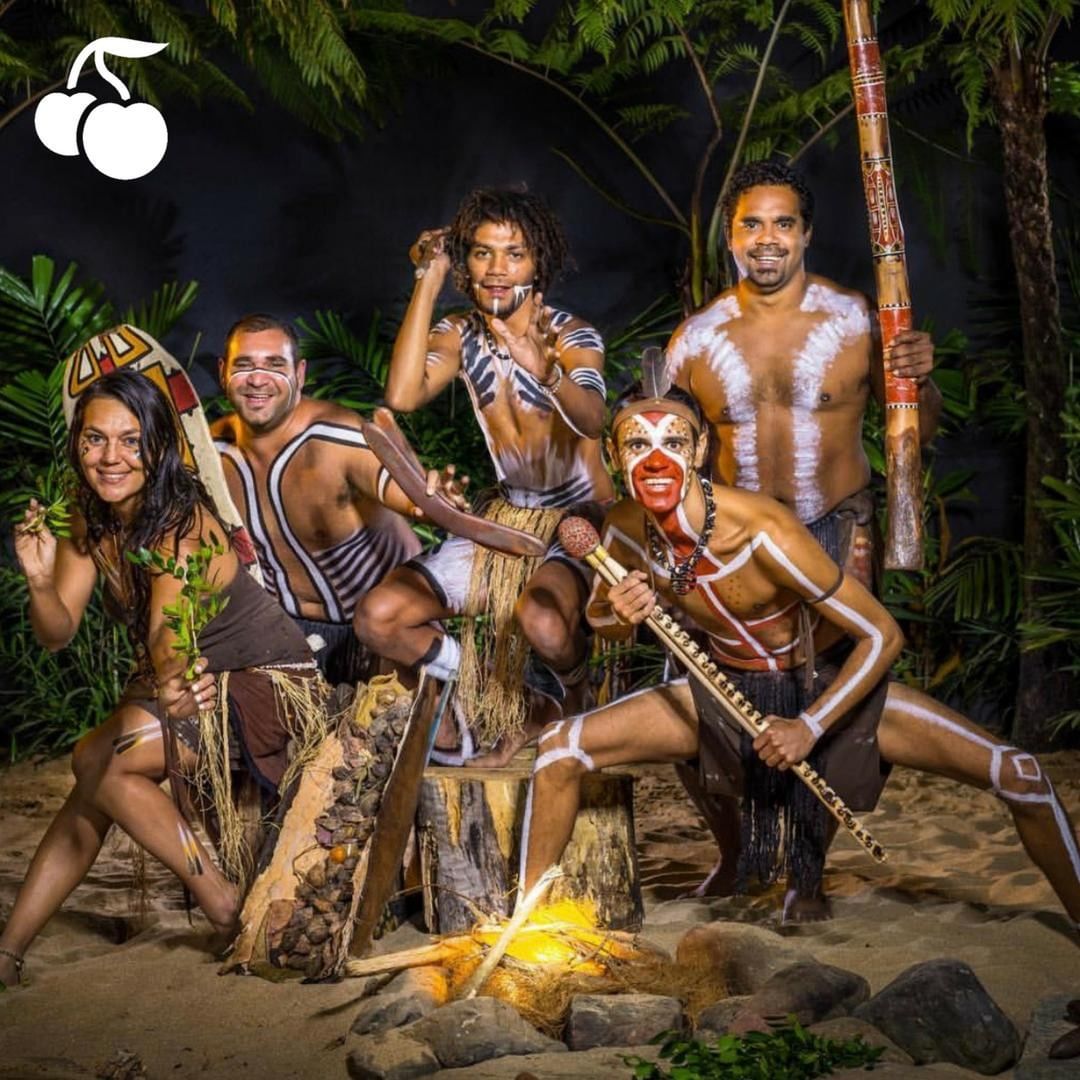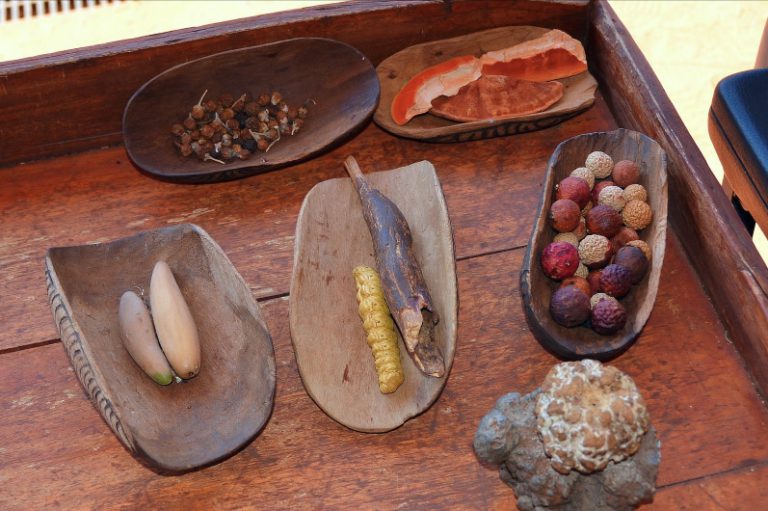A Journey Through Time: Exploring the Cultural Foods and Practices of Australia’s Aboriginal People
A Journey Through Time: Exploring the Cultural Foods and Practices of Australia’s Aboriginal People

Australia, a land of diverse landscapes and vibrant wildlife, is also home to one of the oldest continuous cultures on Earth – the Aboriginal culture. For over 65,000 years, Aboriginal people have lived in harmony with the land, developing unique traditions, beliefs, and practices that have shaped their identity and way of life. This article delves into the fascinating world of Aboriginal culture, exploring their rich culinary traditions and the profound connection they have with the land and its resources.
A Symphony of Flavors: Aboriginal Cuisine
Related Articles: A Journey Through Time: Exploring the Cultural Foods and Practices of Australia’s Aboriginal People
- The Dreamtime: Unveiling The Heart Of Aboriginal Culture
- Unpacking The Meaning Of "Kinta": Exploring Aboriginal Language And Cultural Significance
- A Taste Of Paradise: Exploring The Diverse And Delicious World Of Australian Fruits
- The Rhythms Of The Earth: A Journey Through Aboriginal Musical Instruments
- Hopping Into Art: A Guide To Kangaroo Paintings
Aboriginal cuisine is a testament to the ingenuity and resourcefulness of the people. It’s not just about food; it’s about a deep understanding of the land, its seasons, and the bounty it provides. The focus is on sustainability, using every part of a plant or animal and respecting the delicate balance of the ecosystem.
Bush Tucker: A Culinary Heritage
"Bush Tucker" is the term used to describe the vast array of wild foods consumed by Aboriginal people. This encompasses everything from native fruits, vegetables, and nuts to insects, reptiles, and small mammals. The diversity of this diet is truly remarkable, reflecting the vast and varied landscapes of Australia.
A Taste of the Land:
- Fruits: The Australian landscape is a treasure trove of delicious native fruits. From the sweet, juicy quandong (a stone fruit) to the tangy finger lime, the variety is astounding. Other popular fruits include the Davidson plum (with its rich, dark flavor), the native cherry (a vibrant red fruit), and the wattleseed (a nutty and slightly bitter seed).
- Vegetables: Aboriginal people have long utilized the bounty of the land for their vegetable needs. The warrigal greens (a leafy green with a peppery taste), the wild yam (a starchy root vegetable), and the native spinach (a versatile green) are just a few examples.
- Nuts and Seeds: Nuts and seeds are an essential part of the Aboriginal diet. The macadamia nut (a creamy and buttery nut), the wattle seed (with its unique flavor), and the bush tomato (a small, cherry-like tomato with a tangy sweetness) are just a few examples.
- Meat: While meat is not a staple in all Aboriginal diets, it plays an important role in many communities. Kangaroo, emu, and crocodile are common sources of protein, while smaller animals like goannas (lizards), snakes, and insects are also consumed.

Beyond the Plate: The Cultural Significance of Food
Food is more than sustenance for Aboriginal people; it is a vital part of their cultural identity and a reflection of their deep connection to the land. The act of gathering, preparing, and sharing food is a social and spiritual experience, strengthening community bonds and preserving traditions.
- Respect for the Land: Every food source is treated with respect and gratitude. Aboriginal people believe that the land is a living entity and that everything within it has a spirit. Before harvesting any food, a ceremony is often performed to acknowledge the land and its gifts.
- Sharing and Community: Food is a powerful tool for building and strengthening community. Sharing meals is a central part of Aboriginal culture, and it is a way to show respect, love, and generosity.
- Knowledge and Tradition: The knowledge of bush tucker is passed down through generations, ensuring that future generations will have access to this vital resource. This knowledge includes the best time to harvest, how to prepare the food, and the medicinal properties of each plant or animal.

Cultural Practices: A Tapestry of Tradition

Aboriginal culture is a rich and diverse tapestry of traditions, beliefs, and practices that have evolved over thousands of years. These practices are deeply intertwined with their connection to the land, their spiritual beliefs, and their social structures.
Connecting with the Land:
- Dreaming: The Dreaming is a central concept in Aboriginal culture, representing the creation of the world and the interconnectedness of all things. The stories and songs of the Dreaming are passed down through generations, providing guidance and understanding about the land, its resources, and the responsibilities of the people.
- Ceremonies: Aboriginal people have a rich tradition of ceremonies that mark significant events in their lives. These ceremonies can be elaborate and involve dancing, singing, storytelling, and the use of traditional tools and objects. They are a way to connect with the ancestors, reaffirm their cultural identity, and strengthen community bonds.
- Art: Art is a powerful form of expression in Aboriginal culture, and it is used to tell stories, record history, and communicate important messages. Rock art, body painting, and traditional crafts are all forms of artistic expression that are deeply embedded in their cultural practices.
Social Structures:
- Clan Systems: Aboriginal society is organized into clan systems, which are based on kinship, territory, and shared ancestry. Each clan has its own unique traditions, beliefs, and responsibilities.
- Law and Order: Aboriginal people have a complex system of law and order that is based on respect for the land, the ancestors, and each other. This system is often passed down orally and is enforced through social sanctions and traditional punishments.
Preserving the Past, Embracing the Future
Today, Aboriginal people are working to preserve their cultural heritage and share their knowledge with the wider community. Through initiatives such as cultural tourism, community programs, and education, they are ensuring that the traditions and practices of their ancestors will continue to thrive.
FAQ: Unraveling the Mystery
Q: What are some of the health benefits of Aboriginal food?
A: Aboriginal food is rich in vitamins, minerals, and antioxidants. It is often low in fat and high in fiber, making it a healthy and nutritious option. Many native foods have medicinal properties and have been used for centuries to treat a variety of ailments.
Q: How can I learn more about Aboriginal culture?
A: There are many ways to learn more about Aboriginal culture. You can visit Aboriginal art galleries and museums, attend cultural events, or take a guided tour of an Aboriginal community. You can also read books and articles written by Aboriginal authors and researchers.
Q: What are some of the challenges facing Aboriginal people today?
A: Aboriginal people face a number of challenges today, including poverty, unemployment, and health disparities. They also face the ongoing impact of colonization, which has led to the loss of land, language, and cultural practices.
Q: How can I support Aboriginal communities?
A: There are many ways to support Aboriginal communities. You can donate to Aboriginal organizations, volunteer your time, or purchase products from Aboriginal businesses. You can also educate yourself about Aboriginal issues and advocate for their rights.
Conclusion:
The cultural foods and practices of the Aboriginal people of Australia are a testament to their resilience, adaptability, and deep connection to the land. Their unique cuisine, traditions, and beliefs offer a glimpse into a rich and complex culture that has endured for thousands of years. By understanding and appreciating this heritage, we can gain a deeper understanding of Australia’s history, its diverse people, and the importance of preserving cultural diversity for future generations.

Closure
Thus, we hope this article has provided valuable insights into A Journey Through Time: Exploring the Cultural Foods and Practices of Australia’s Aboriginal People. We hope you find this article informative and beneficial. See you in our next article!


